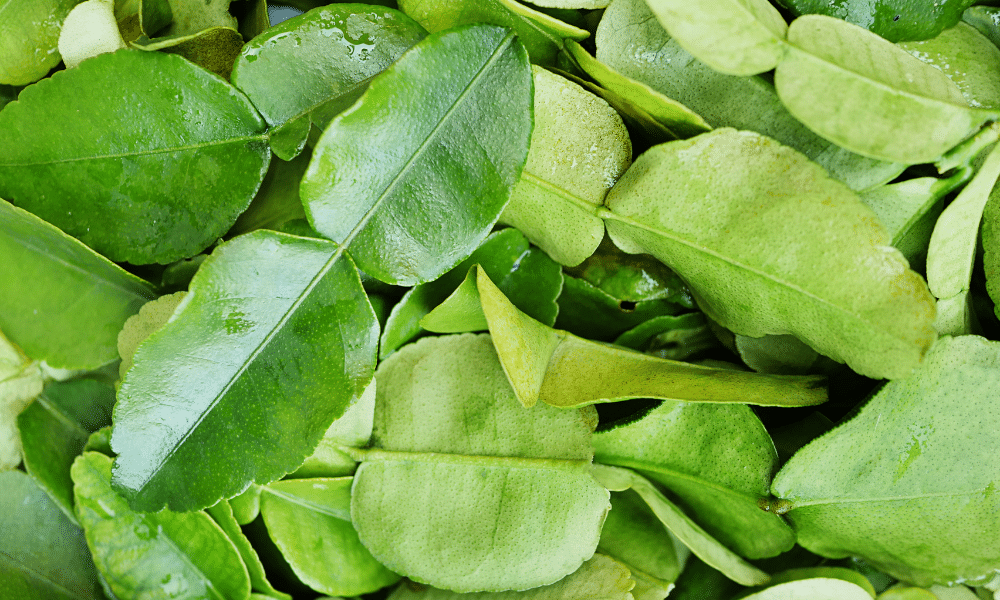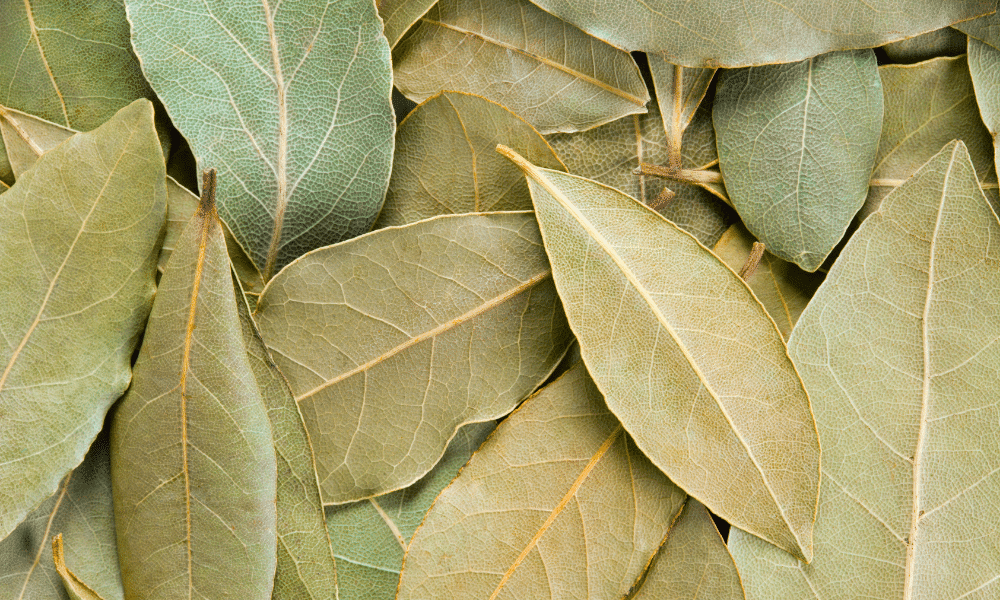Nothing can help you reach that authentic Indian taste like curry leaves, which is why they are a staple of Indian cuisine. As well as being full of beneficial antioxidants, curry leaves are the perfect flavour booster for any Indian dish.
They are usually available in the world food or spice section at your local supermarket, but what if you need a curry leaf replacement ASAP?
Our 4 Substitutes for Curry Leaves
What makes curry leaves so effective in a dish is their fresh, citrusy flavour that develops an earthy tone when cooked. It is also incredibly aromatic! These are the flavours we are looking to replicate.
So, here are our top 4 substitutes for curry leaves:
1) Kaffir Lime Leaves
As Asian cuisine becomes more popular in the western world, so do their ingredients. So, while still not available everywhere, it won’t take long to track down some fresh (or dried) kaffir lime leaves.
They may not yet be the most common substitute on this list, but if you have kaffir lime leaves readily available, then they will make the best substitute for curry leaves by far.
Kaffir lime leaves have an extra citrusy taste (hence, the name) that will give your dish a delicious aroma. The leaves themselves also have a spicy undertone, creating the perfect balance between hot and sharp.
The only real difference between kaffir leaves and curry leaves is that kaffir lime leaves carry a lot more prevalent citrus notes.
That is why you should only use 6 kaffir leaves for every 10 curry leaves that a recipe calls for.
Pair Kaffir Lime Leaves with Coconut Milk
While kaffir leaves work well with a range of ingredients, it especially helps to elevate dishes using coconut milk.
If you’re feeling adventurous substitute milk or cream for coconut milk whenever you must use kaffir leaves in a curry.

2) Lemon or Lime Zest
It is the citrus flavour of curry leaves that gives your dish that sharp kick. Lemon or lime zest are both inexpensive ways of replicating that same strong taste.
That’s because the oil in the rind of lemon and lime has a fresh, tangy taste. Then, when you use the zest in a dish, you get that signature hit of deep flavour.
Lemon and lime zest is useful in a range of dishes, even outside of being a curry leaf substitute. It would be hard to find a dish that wouldn’t benefit from the fresh, sharp flavour of lemon or lime.
However, lemon or lime zest is particularly effective in yoghurt-based curries, soups and when paired with fish.
For reference, use one fully zested lemon or lime to 8 curry leaves.
Stick to Unwaxed Lemons and Limes
If you want to be able to access the oil within the rind of a lemon or lime, you are going to want to buy unwaxed produce. The wax will prevent you from being able to efficiently zest the lemon or lime.
You could just use the juice of the fruit as it will also provide a similar citrusy flavour as curry leaves. But, for the best result, it is the zest that you should favour.
3) Bay Leaves
As well as being used in many Indian dishes, bay leaves are often associated with comfort food. They are an effective way to make easy food taste delicious with little effort on your part.
Bay leaves allow you to give your dish the best of both worlds, with a hint of sweetness along with a savoury finish.
Though they are a great pairing for most fish and meat, bay leaves are far more powerful than curry leaves in their flavour.
Only use one bay leaf for every 8 or so curry leaves. This will prevent you from overpowering your dish. They are a great, versatile herb and will add a lot to your dish if used correctly.
Oh, and don’t forget to take the leaves out of your dish before you serve! No one wants to be left chewing on a tough bay leaf.
Get Your Timings Right…
The best way to use bay leaves is to add them early on in your dishes cooking time. Especially if your dish requires slow cooking like curry or soup.
Bay leaves like to release their full flavour over an extended time. The longer you can leave them to cook, the better tasting your dish will be.

4) Basil Leaves
In terms of that sweet earthy flavour that curry leaves have, basil leaves are a great substitute. However, they lack the tangy, bitter contrast that makes up the complex curry leaf flavour.
This can easily be fixed with a dash of juice or some zest from a lemon or lime.
As well as hitting the flavour notes of curry leaves (with a little bit of help), basil leaves also have a very similar fragrance and texture. If you are only used to cooking with curry leaves, then transitioning to basil leaves will not be that different.
Tear, Don’t Cut!
Don’t just shove a whole basil leaf into your dish and don’t cut it up either. Instead, tear the leaf into smaller pieces. This will help preserve the leaf’s flavour and make your dish even tastier.
Other Substitutes for Curry Leaves
Don’t have any of the above substitutes to hand but still want to give your curry dish that extra kick? Here are a few more common ingredients you may already have in your kitchen:
- Lemon or Lime Juice – It will not be as close to the flavour of curry leaves as zest, but lemon and lime juice can make for a sharp, citrus substitute.
- Dried Herbs – Dried basil can help to make your dish more complex, but the flavour will be milder than fresh basil leaves.
Summary
To best replicate the citrusy but earthy flavours of curry leaves, the best substitute is kaffir lime leaves. But they are not as common as other just as effective ingredients like lime zest or basil leaves.
